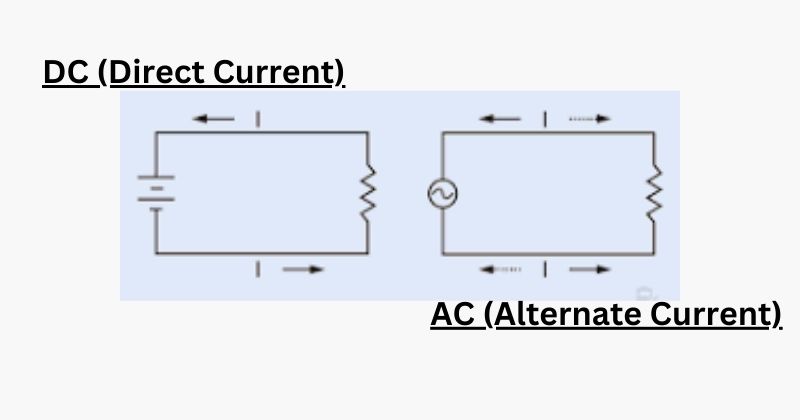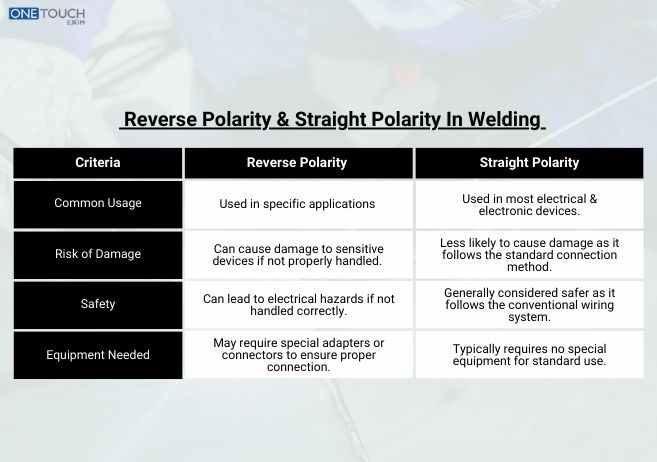In the world of welding, polarity plays a crucial role in determining the quality and effectiveness of a weld. It refers to the direction of the electrical current flowing through the welding circuit during the welding process. There are two main types of polarity commonly used in welding: reverse polarity (also known as electrode-positive or EP) and straight polarity (also known as electrode-negative or EN). In this blog, we will delve into what is reverse polarity in welding, the differences between reverse and straight polarity, and when to use each type for optimal results.
What is Reverse Polarity (EP):
Reverse polarity occurs when the workpiece is connected to the positive terminal of the welding machine, while the electrode (typically made of a consumable filler metal) is connected to the negative terminal. This setup results in a high heat input at the workpiece, making it the preferred polarity for welding thicker materials. Reverse polarity allows for deeper penetration into the base metal, making it ideal for welding applications that require a strong and secure bond.
One of the key advantages of reverse polarity is its ability to produce a stable arc with minimal spatter, resulting in a clean and smooth weld bead. This polarity is commonly used in welding processes such as shielded metal arc welding (SMAW), gas metal arc welding (GMAW), and flux-cored arc welding (FCAW). Additionally, reverse polarity can improve the overall efficiency of the welding process, leading to higher productivity and reduced welding defects.
What is Straight Polarity (EN):
In contrast to reverse polarity, straight polarity involves connecting the workpiece to the negative terminal of the welding machine, while the electrode is connected to the positive terminal. This setup results in lower heat input at the workpiece, making it suitable for welding thinner materials. Straight polarity is commonly used in welding processes that require a lower level of penetration, such as gas tungsten arc welding (GTAW) or TIG welding.
Straight polarity offers better control over the welding arc and allows for precise weld placement, making it ideal for applications that require fine detailing or welding on thin-gauge materials. This polarity can also help minimize distortion and warping of the workpiece, providing a more aesthetically pleasing and structurally sound weld.
When to Use Reverse or Straight Polarity:
The choice between reverse and straight polarity ultimately depends on the specific requirements of the welding application. For welding thicker materials that require deep penetration and high heat input, reverse polarity is the preferred option. This polarity is commonly used in applications such as welding structural steel, pipelines, and heavy machinery.
On the other hand, straight polarity is best suited for welding thin materials, intricate designs, and applications that require precise control over the welding arc. This polarity is often used in applications such as aerospace manufacturing, automotive bodywork, and stainless steel fabrication.
How do AC and DC currents differ in welding?

In AC welding, the current constantly changes direction, switching between positive and negative cycles. This alternating current helps prevent arc blow, improves penetration, and reduces overheating in the workpiece. However, AC welding may not provide as stable an arc as DC welding.
In DC welding, the current flows consistently in one direction, either from the electrode to the workpiece (straight polarity) or from the workpiece to the electrode (reverse polarity). Straight polarity in DC welding generates deeper penetration, making it suitable for welding thick materials. While reverse polarity produces a smoother arc and better weld bead appearance.
Choosing the right stick welding polarity for different welding processes depends on factors such as the type of material being welded, desired penetration, and aesthetics of the weld bead.
Differences Between Reverse Polarity And Straight Polarity In Welding
Certainly! Here is a table outlining the differences between reverse polarity and straight polarity:
| Criteria | Reverse Polarity | Straight Polarity |
| Definition | Polarity where the positive and negative terminals are reversed. | Polarity where the positive terminal is connected to the positive source and the negative terminal is connected to the negative source. |
| Common Usage | Used in specific applications | Used in most electrical & electronic devices. |
| Risk of Damage | Can cause damage to sensitive devices if not properly handled. | Less likely to cause damage as it follows the standard connection method. |
| Safety | Can lead to electrical hazards if not handled correctly. | Generally considered safer as it follows the conventional wiring system. |
| Equipment Needed | May require special adapters or connectors to ensure proper connection. | Typically requires no special equipment for standard use. |
| Industry Applications | Commonly found in some battery-powered devices, such as radios and flashlights. | Widely used in household appliances, computers, and electronic devices. |
Conclusion
In conclusion, polarity in welding refers to the direction of electric current flow during the welding process. In traditional welding, a direct current (DC) is used, and polarity refers to the direction of the DC current flow. Reverse polarity welding, also known as “reverse polarity” or “electrode negative” welding, involves reversing the direction of the DC current flow, with the electrode becoming the negative terminal and the workpiece becoming the positive terminal. This technique is used in various welding processes, including shielded metal arc welding (SMAW), gas metal arc welding (GMAW), and gas tungsten arc welding (GTAW). Reverse polarity welding offers several advantages, including improved arc stability, reduced spatter, and enhanced weld quality. Understanding polarity in welding is crucial for achieving optimal welding results, and reverse polarity welding is a valuable technique that can be used in a variety of applications. By mastering this technique, welders can improve their overall welding performance and produce high-quality welds.
